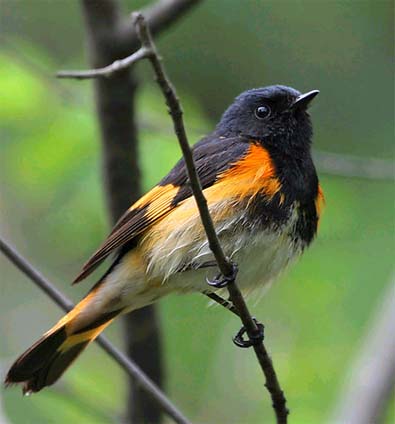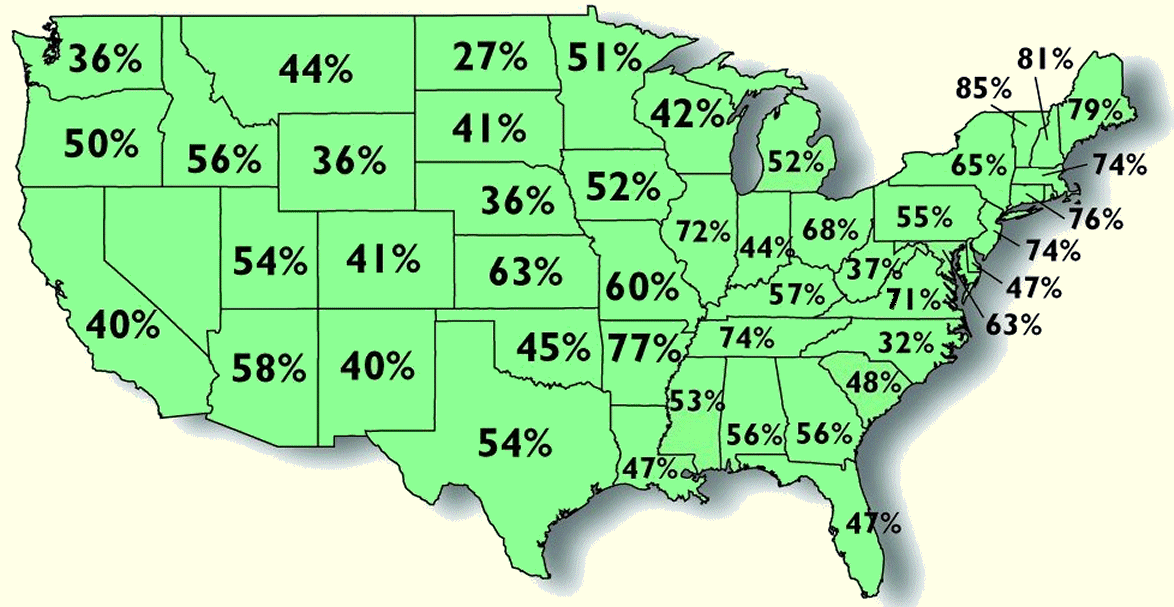 American RedstartIt is pathetic, but true, that there are 391 Starbuck's coffee houses
American RedstartIt is pathetic, but true, that there are 391 Starbuck's coffee houses within an
hour's drive from my house (50 miles). Amazingly, all of them seem to have a line of customers at all hours of the day. Could Americans be any more addicted to $4 coffees?
I told you it was pathetic, and as soon as they serve me my coffee, I promise you I'm going to leave.
As I wait for my coffee, I read the paper. Paul Wolfowitz, the current head of the World Bank and one of the architects of the war in Iraq, looks like he may lose his job for promoting his girlfriend to a World Bank job that pays better than
Condoleeza Rice's.
The shocking part is not that there are scoundrels in Washington, or waste and corruption at the World Bank, but that Paul
Wolfowitz has a girlfriend. Of course he had to
pay her, but it's still amazing. Apparently, the human soul knows no limits to depravity.
Coffee and the World Bank. There is a connection there, and I recall the linkage as I watch the pigeons rearrange themselves on the telephone wire in front of the Safeway food store across the street.
Legend has it that the coffee plant was first discovered in Ethiopia by a goat herder who found his charges a little
too animated after eating beans from a local bush. The coffee plant (and the drink) eventually made its way to Yemen and the Arab world via the Sudanese slaves that were forced to paddle boats across the Red Sea to the Arabian Peninsula.
With alcohol banned, coffee quickly became the "drug of choice" in the Arab world. While an alcohol-besotted Europe struggled in a drunken haze through the Dark Ages, the Arab world became
caffeinated and invigorated. Soon after they started the first coffee houses in the world, Arabs began creating grand libraries, universities, new mathematical equations, and amazingly complex architectural designs.
Such is the power of coffee.
Coffee houses hit Europe around 1600, and there they had the same effect they had in the Arab world -- a spectacular growth in intellectual clarity and output. From the enlightened coffee houses of London grew the first newspaper divisions (
business,
style, overseas news, etc.), the first organized scientific associations, and
Lloyds of London -- the first international insurance cartel.
Coffee consumption took off like a rocket in Great Britain, and in 1796, when the British took over
Sri Lanka (Ceylon) from the Dutch, the new settlers began clearing land for coffee plantations.
By the 1860s, Sri Lanka was the largest coffee producer in the world.
In 1869, however, a lethal fungus known as coffee rust had shown up on the island causing premature defoliation of the coffee plants, and dramatically reducing berry yield.
By 1879, the rust fungus had spread across the island and into Indian plantations as well, with the result being a collapse of coffee production across the region.
Unable to grow coffee in the face of a devastating rust fungus epidemic, Ceylonese and Indian plantation owners began to rip out their coffee plants in order to grow tea.
Within a few decades, tea consumption in the U.K. had surpassed coffee consumption, and it has remained so to this day.
While tea is the national drink of Great Britain, coffee remains the national drink of the United States, where we consume vast quantities of it. In fact, though coffee is the second most internationally traded commodity in the world (after oil), the U.S. consumes one-quarter of the world's coffee beans.
Coffee came to the New World via the French, who introduced it into the Caribbean in the mid 1700s, and the Spanish, who brought coffee plants to Latin America a few decades later.
By the mid 1800s, coffee plantations had been planted in Central and South America, and these coffee plantations were greatly expanded after coffee rust decimated production in
Sri Lanka and India.
Coffee plantations in Central and South America were diverse operations that grew, rather naturally, out of the multi-storied small-patch gardening operations that had been
successfully employed by the native Indians for several thousand years before Columbus.
These small patch gardens were created by removing large trees with little agricultural value, but leaving those that might yield a nut harvest, good wood, seasonal fruits, or which had the lucky property of fixing nitrogen in the soil.
Under these large forest tree were planted shorter citrus and cacao trees, and between these were planted bananas. Underneath and between the bananas were planted coffee bushes and vegetable crops for local food consumption.
Multi-storied "shade coffee" plantations were miracles of production. When coffee prices fell (as they often did), other crops provided sustenance and cash, ensuring that the local could always eat and pay for things made elsewhere.
Because multiple types of plants were found on shade-grown coffee plots, multiple types of insects and birds were present. The result was not only less overall insect predation on any one crop, but less erosion and slower evaporation as both rain and sunlight filtered through multiple vegetative layers.
Shade-grown coffee plantations were particularly rich in bird life -- especially
neo-tropical migrant song birds such as
redstarts,
Tenessee warblers, Baltimore Orioles, yellow-
throated and solitary vireos, wood thrushes, catbirds, ruby-
throated hummingbirds, Nashville Warblers, and oven-birds.
All told, more than 150 bird species are known to winter or live year-round in shade coffee plantations, making them the most bird-intensive agricultural areas in the world.
Shade coffee production thrivedSri Lanka) 100 years earlier was discovered in Brazil and Nicaragua. This discovery caused a panic, not only in the coffee industry, but also among the economic and political elite that run such major banking and development policy shops as the World Bank, the International Monetary Fund, and the U.S. Agency for International Development..
The fear was that coffee rust would soon sweep through Central and South America. If that happened, not only would the coffee crop be destroyed, but so too would the economic base of entire countries and many millions of people. If that happened, not only would we not have coffee in New York, Paris and Vienna, but billions of dollars of foreign loans would go unpaid.
Something had to be done.
What was done was massive, mechanical, and swift. Under orders from the World Bank, the International Monetary Fund, the U.S. Agency for International Development, and the large cartels that control much of the world's coffee market, coffee plantations in Central and South America were systematically ripped from the ground and replanted.
The idea here was a simple one: by growing coffee in direct sun, rather than in the shade, coffee plants could made safe from the coffee rust fungus. The prescription for salvation was destruction, and entire mountain sides were plowed clear of their multistory canopies and the detritus burned. In their place was planted dense
hedgerows of a dwarf variety of coffee that could withstand direct tropical sunlight.
With the loss of a diversified shade forest cover, bird populations that had once thrived in the rich
overstory of coffee plantations
plummeted. At the same time, with the absence of trees to provide
vegetative nutrients to the soil and hold back
erosion, the fertilizer needs of coffee plantations skyrocketed. Mono-cropped sun coffee plantations proved far more susceptible to insect infestations than shade plantations, so insecticide inputs also increased. The open sunny soil between coffee plants proved susceptible to weed infestations, so herbicide use also increased. Finally, though the new coffee plants produced a great number of beans, the plants themselves were not as hardy as the old shade-grown varieties, and an additional expense had to be factored into the equation -- the cost of periodically replanting large numbers of exhausted plants.
Ironically, all of the devastation and destruction was not needed. It turns out that due to the peculiarities of Latin
America's climate and the timing of rain, humidity and mountain temperature, coffee leaf rust has
not been able to proliferate in either Central or South America.
Adding insult to injury, it turns out that the new dwarf
varieties of sun-grown coffee are
not less susceptible to coffee leaf rust than the older varieties. When a fungus outbreak does occur, as it sometimes does, it is generally localized and easily treatable with a copper-based fungicide.
Sadly, however, the damage to the once-vibrant shade coffee plantations cannot be rapidly undone. Forests that took decades to grow were razed to the ground in hours, and will now take decades to grow back.
The good news is that some people are re-thinking coffee production in Central and South America, and in time shade-grown coffee may yet make a partial come back.
If so, the folks spearheading the charge will be the aging hippies and
eco-freaks that once wore tie-dyed T-shirts and
earthshoes. Now older, these folks frequent businesses like Starbucks and Ben & Jerry's Ice Cream, edit newspapers and magazines, start movements, run foundations, and are otherwise a social force to be reckoned with.
For this set, buying coffee has become a political act. From their perspective, if you are not buying shade-grown, organic, free trade coffee, then you are simply giving the "big wink" to American song bird destruction and the poisoning of the soil, people and economies of Latin America.
They have a point, and it's such a good and strong point that companies like Starbucks are working to change their business practices as a consequence.
Working with Conservation International, Starbucks has created a set of
Coffee and Farmer Equity practices (CAFE for short ) to guide the growing and purchase of coffee.
This year, Starbucks is
supposed to purchase 60 percent of its coffee from suppliers who successfully implement the CAFE guidelines.
The end of this story is not yet written, but it may yet be good news, albeit good news that remains at least 10 or 15 years off due to slow nature of the turn around, and the slow regrowth of shade coffee plantations.
That said, if consumers continue to demand and purchase shade grown coffee grown in Mexico and Central America, we may yet see a turn around in
neotropical songbird decline in the United States.
If so, that would certainly make a $4 coffee worth the price.
. This is a repost from 2007. .



